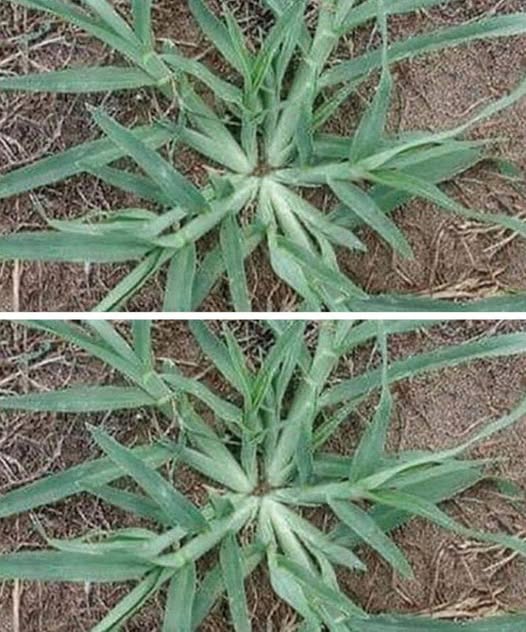🌿 The Garden Guardian: Why You Should Never Uproot Purslane
Most gardeners pull purslane from the soil without a second thought, dismissing it as just another persistent weed. But what if we told you this humble plant is a nutrient-dense superfood, rich in omega-3 fatty acids, antioxidants, and essential minerals?
Purslane (Portulaca oleracea) is a low-growing succulent often found creeping along garden beds, sidewalks, and neglected corners of the yard. While it may seem invasive, this wild green is not only edible—it’s incredibly delicious, versatile, and packed with health benefits. In fact, purslane has been consumed for thousands of years in traditional diets across the Mediterranean, Middle East, and Asia.
🌱 What Is Purslane?
Purslane is a fast-growing, drought-tolerant succulent that thrives in various soil conditions. Its small, paddle-shaped leaves and reddish stems store water, making it resilient and easy to grow.
But what truly sets purslane apart is its nutritional profile:
- Rich in alpha-linolenic acid (ALA) – a plant-based omega-3 fatty acid
- High in vitamins A, C, and E
- Contains magnesium, potassium, and iron
- Loaded with antioxidants like glutathione and betalain pigments
Few garden plants can match purslane’s nutritional value—and yet it’s often overlooked and discarded.
🍽️ Why You Should Eat Purslane Instead of Pulling It
Rather than uprooting this “weed,” consider harvesting it and turning it into a flavorful, healthy meal. It has a refreshing, slightly tangy taste and a pleasing crunch that works beautifully in salads, stir-fries, and sautés.
Not only will you save money by foraging your greens, but you’ll also:
- Reduce waste in your garden
- Add a powerful plant-based source of omega-3s to your diet
- Enjoy a locally sourced, pesticide-free superfood
Purslane is especially useful in low-carb, Mediterranean, vegan, and keto-friendly diets.
🍅 Simple and Nutritious Recipe: Purslane & Tomato Sauté
This easy sautéed purslane dish is a celebration of fresh, seasonal ingredients—perfect as a side or light main course. The earthiness of purslane pairs perfectly with the acidity of tomatoes and the richness of olive oil.
🧄 Ingredients:
- 2 cups fresh purslane, rinsed and tough stems removed
- 1 medium red onion, thinly sliced
- 2 ripe tomatoes, chopped
- 2 cloves garlic, minced
- 2 tablespoons extra virgin olive oil
- Juice of half a lemon
- Salt and pepper to taste
- (Optional): ¼ teaspoon chili flakes for a little heat
👩🍳 Instructions for Purslane & Tomato Sauté
Step 1: Clean the Purslane
Rinse thoroughly under cold running water to remove dirt or grit. Gently pat dry using a towel. Trim off any thick or woody stems to ensure even cooking.
Step 2: Sauté the Aromatics
In a large skillet or frying pan, heat olive oil over medium heat. Add the sliced onion and minced garlic. Sauté for 2–3 minutes until the onion becomes translucent and aromatic.
Step 3: Add the Tomatoes
Add chopped ripe tomatoes and cook until they begin to soften and release juices, about 5 minutes.
Step 4: Add Purslane
Add the purslane and stir gently to combine. Cook for an additional 3–4 minutes, just until the leaves wilt slightly but still retain their color and crunch.
Step 5: Season and Serve
Add salt, black pepper, lemon juice, and chili flakes (if using). Mix well and remove from heat.
🥗 How to Serve Purslane & Tomato Sauté
This sauté is incredibly flexible and can be enjoyed in a variety of ways:
- As a warm side dish to grilled chicken, fish, or tofu
- Served over rice or quinoa for a light lunch
- With crusty bread, perfect for soaking up the juices
- As a topping for bruschetta or crostini
- Mixed with pasta or used as a filling in savory crepes or omelets
❄️ Storage Tips
If you have leftovers:
- Store in an airtight container in the refrigerator for up to 2 days.
- Reheat gently over low heat or enjoy cold as a salad-style dish.
🔄 Recipe Variations and Additions
This dish is a great base for experimentation. Here are some tasty twists:
- Add chickpeas or white beans for added protein.
- Stir in a spoonful of yogurt or labneh for creaminess.
- Mix with feta or goat cheese for a salty bite.
- Sprinkle with fresh herbs like parsley, dill, or mint.
- Add a splash of balsamic vinegar or pomegranate molasses for depth.
🌍 Sustainability Bonus: Wild, Free, and Eco-Friendly
Foraging purslane from your garden is not just healthy—it’s environmentally sound. You reduce:
- Dependence on store-bought greens (and packaging)
- Food waste from overlooked edible plants
- The carbon footprint of commercially grown and transported greens
By choosing to nurture and use purslane, you’re practicing sustainable gardening and conscious eating—a win-win for you and the planet.
💡 Quick Purslane Facts You Should Know
- Purslane is edible from root to flower.
- It’s also used topically for skin healing and anti-inflammatory properties.
- Ancient cultures used it as a natural remedy for insomnia, inflammation, and ulcers.
- Purslane contains more omega-3s than any other leafy green!
✅ Conclusion: Keep, Don’t Kill—Let Purslane Flourish
Instead of tossing purslane aside as a weed, see it for what it is: a powerful ally in your garden and your kitchen. With its superior nutritional profile, refreshing taste, and quick prep, purslane earns its spot among the best homegrown superfoods.
Next time you find it growing wild, think twice before uprooting it. Try this simple sautéed recipe or get creative with your own dishes—and let this resilient plant reward you with vitality, flavor, and nourishment.
